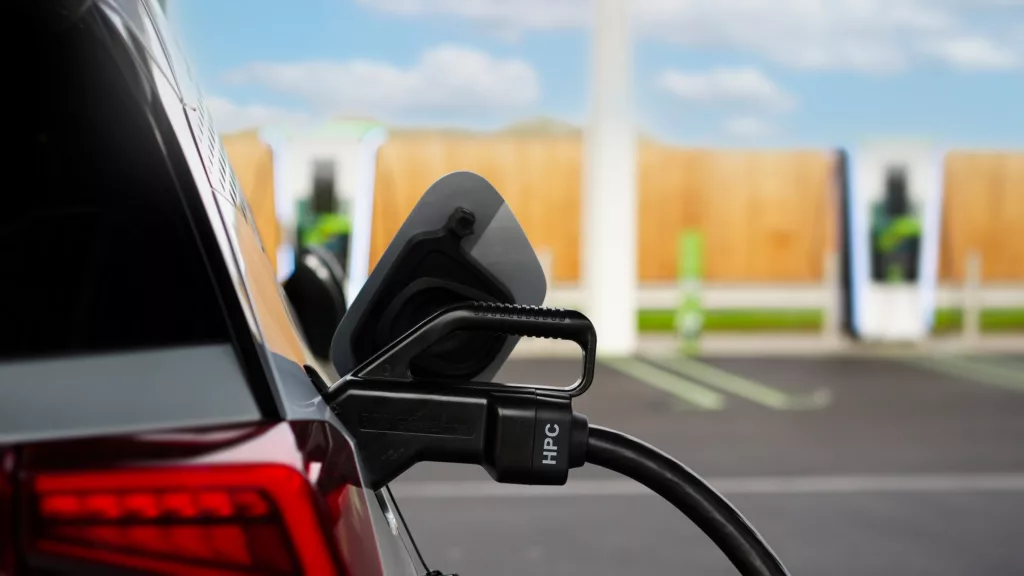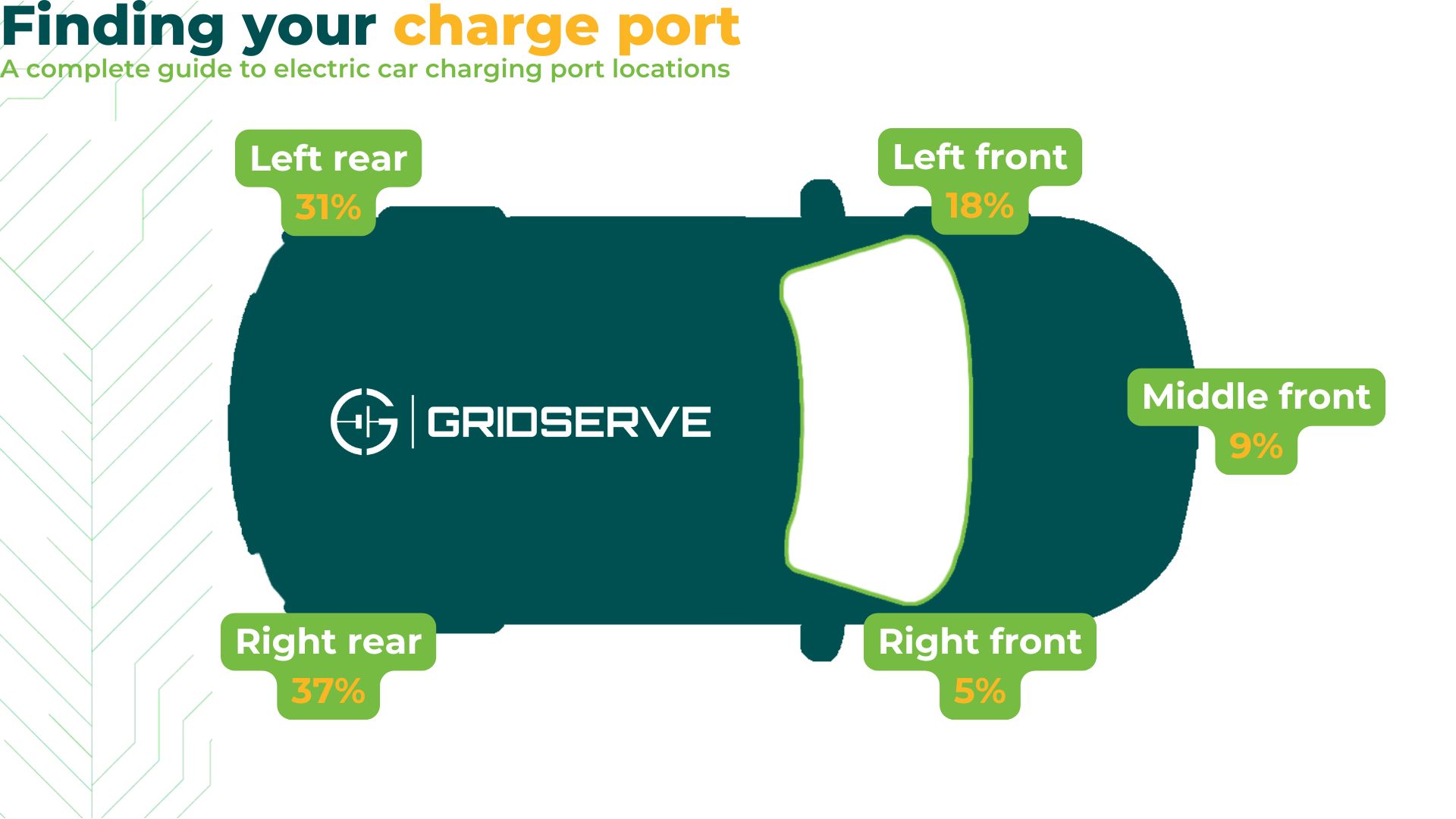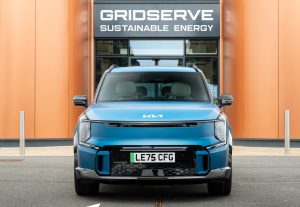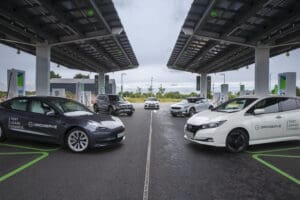

Although you might have driven the same car every day for years, you probably still have a sudden panic every time you turn into a petrol station… which side is my fuel filler cap? And then crucially, is there an available spot with the pumps on the right side?
Most drivers sit and queue until a correctly placed pump opens up while some brave souls battle with the hose and drape it unceremoniously over their bootlid.
Fortunately for electric car drivers using a public charging point on the GRIDSERVE Electric Highway, life is a little simpler.
The majority of our electric car charging points are placed at the end of a bay, so it doesn’t matter if your charging port is located on the left or right, front or back. Our tethered charging cables are designed to be long enough to reach across your electric vehicle, too.
While at our Electric Forecourts®, we have plenty of available rapid charging bays so it’s unlikely you won’t find a spot on the correct side.
Still, it’s useful to know where the charging port is for a variety of reasons, more on that in a moment…

What’s the most common electric vehicle charging port location?
The results are in… the right rear is the most common place for a charging port on your car, with 37% of vehicles on sale configured this way in the UK.
The next most popular spot is the left rear (31%), followed by left front (18%). That means you’re actually more likely to find the port on the left side overall. A charging flap in the front grille ranks next (9%), followed by right front as the least common (5%).
Interestingly, over the past 12 months, the trend is to favour the left rear with newer models favouring this position over the right rear.
So what does that mean for you? If you can’t remember as you approach an EV charging station, we’d recommend reversing into a charging bay as you’ll have easy access in nearly two-thirds of vehicles.
Plus, leaving the bay is safer if you can drive out as you’ll have full view of anyone returning to their car from a quick stop in Greggs or Costa.
Clearly, for those with charger points at the front (32% of cars on sale), you’ll have no option but to drive nose in. It’s for these drivers that we’d recommend taking extra care when leaving a charger and making use of reversing cameras and sensors to avoid accidents with pedestrians or pets.
Why is charging port location important?
You’ll have no problems on the GRIDSERVE Electric Highway wherever your electric vehicle connector plug is located, but we’d recommend checking the port’s placement before you buy or lease a new electric car if you’re planning to charge at home.
Are there restrictions on where you can install a dedicated home EV charger? If you can only park a certain way on a driveway, then that might influence which car you pick – or you’ll have to ensure your charging cable is long enough.
Or perhaps you live on a main road where reversing out of your drive is not possible. In this case you’ll want a car that can charge at the front.

Where is the charging port located on my EV?
There’s no hard and fast rule, and no legislation, over where a charging port should be.
The majority of big German car brands, like Volkswagen, Mercedes-Benz and Audi, fit their charging ports to the right rear – that’s because they’re designed for the majority of their sales in Europe where motorists drive on the right-hand side of the road. This exposes the charging port to the kerbside allowing them to plug in easily at on-street electric car charging points.
That’s opposed to the brands that fall under the Stellantis umbrella (e.g. Citroen, Peugeot and Vauxhall), which favour the left rear, which is better suited to UK left-hand drive roads.
Then, there are those that like to do things a little differently… like some MGs and the Renault Zoe have their charging ports in the middle, behind the front grille.
Many of the new Chinese brands, plus budget models, are also favouring front middle positions, such as Omodo, Leapmotor and Dacia.




